Seeing and Hearing Color
Green is a Chile Pepper; Alphabet in Color; Pocket Full of Colors; Blue
Spring came and went, and now here we are in June! We see a lot of rainbows this month for excellent reason, but I’m going to wander in a more literally colorful direction presently. (If you’re looking for books that embrace and celebrate queer identities and communities, please check out Issue 4: Pride and Anti-Prejudice and Issue 9: Gender Spectacular.) At home we have been heads down ALL spring, preparing to resurface two very old bathrooms in our home, so T and I have been round-and-round the color wheel, deep in the trenches of color perception theory, soul-searching for our perfect expression of selves via paint and tile and such. I tried bibliomancing the Taschen tarot book, T revisited a decade+ of favorite Flickr art photos, and we are finally digging ourselves out from under a ginormous mountain of swatches. Choosing colors to invest deeply in and to live intimately with for a (hopefully) very long time turns out to be an extraordinarily difficult process! It felt appropriate to be reflecting so carefully on color in the season of wildflowers and new growth. The kids have been subjected to so much of this endless conversation. To them, though, it seems quite easy: they just want a black and red bathroom. Or purple and yellow. Or silver and gold. This process dominated our adult lives more than our kids’, but I did pull out all of our color-centric picture books for them to pursue. These four books actually do a pretty great job of encapsulating the romance, complexity and power of color, and the power and privilege of selecting and exercising color.
Green is a Chile Pepper is a picture book that teaches color names, in English and Spanish, by presenting a series of broadly familiar Latin@ foods and objects. We’ve had this one since our 9-year-old was a toddler. It’s a simple, warm, lovely book, and I mention it first in this roundup because it hints at the way strong associations are built between colors and feelings (traditions, habits, etc etc).
Green is a Chile Pepper. 2014, Roseanne Thong, John Parra. Target age: PreK-K [libraries, bookstores, read-aloud]
Moving right along from the sweetly straightforward to the eye-opening wowery of twin-firing senses, we have a literal picture book visually interpreting Nabokov’s brief passage on his own synesthesia. While we were reading it, my youngest asked if this condition can develop later in life because he wanted to have that experience, and although I’m generally wary of fetishizing differences, I’m glad that his impulse was to pull in closer. The bookmaking here is really fine and lovely, with pages cut in ascending sizes, edge-indexed by color. You’d want to handle it carefully – this one isn’t a children’s book, and lives on a higher shelf, not because of any questionable content but more because it’s both delicate and mostly an essay. But it does provide a great counterpoint to the Chile Pepper book, a fair introduction to the less obvious linkages and associations of color, and a welcome invitation for adults to spend time with such easy reading as an alphabet book. Regretfully, it looks like this was a small print run – you can pick them up online, but they’re quite expensive. Keep an eye on Abe and such!
Alphabet in Color. 2005. Vladimir Nabokov, Jean Holabird, Brian Boyd. Target age: General audience [libraries]
Mary Blair collected colors her whole life, and didn’t hesitate to apply them in unconventional ways, even when her colleagues couldn’t grok it. She was an artist and animator long employed by Walt Disney with work appearing in many films and Disneyland attractions. My kids enjoy this book because it greenlights bucking the status quo. I’ve loved many of Brigette Barrager’s illustrated children’s books, and she’s an excellent match for this story because of her own creative use of color.
Pocket Full of Colors. 2017. Amy Guglielmo, Jacqueline Tourville, Brigette Barrager. Target age: PreK-Gr2 [libraries, bookstores, read-aloud]
Blue is a book about the social history of the color, exploring the politics of color procurement. This is a challenging read because it confronts oppression and enslavement as tools of production. Like so many factuals written for children, it’s an important read for grownups as well. I have been wrestling with my feelings about this book for many months now. Because while I might like to think color “selection” is merely a matter of personal preference, or of measured artistic discernment, or of some mystical expression, we should also consider that exercising our access to color might actually be a flex of wealth, power, and influence. It is personal, and it is also inescapably political. Children can handle this important history. This book provides excellent opportunities to talk about fair compensation for hard work, sustainable production and consumption, the importance of technological progress, and how historical practices layer long-lasting meaning onto objects.
Blue. 2022. Nana Ekua Brew-Hammond, Daniel Minter. Target age: Gr1-4 [libraries, bookstores, author read-aloud and chat]


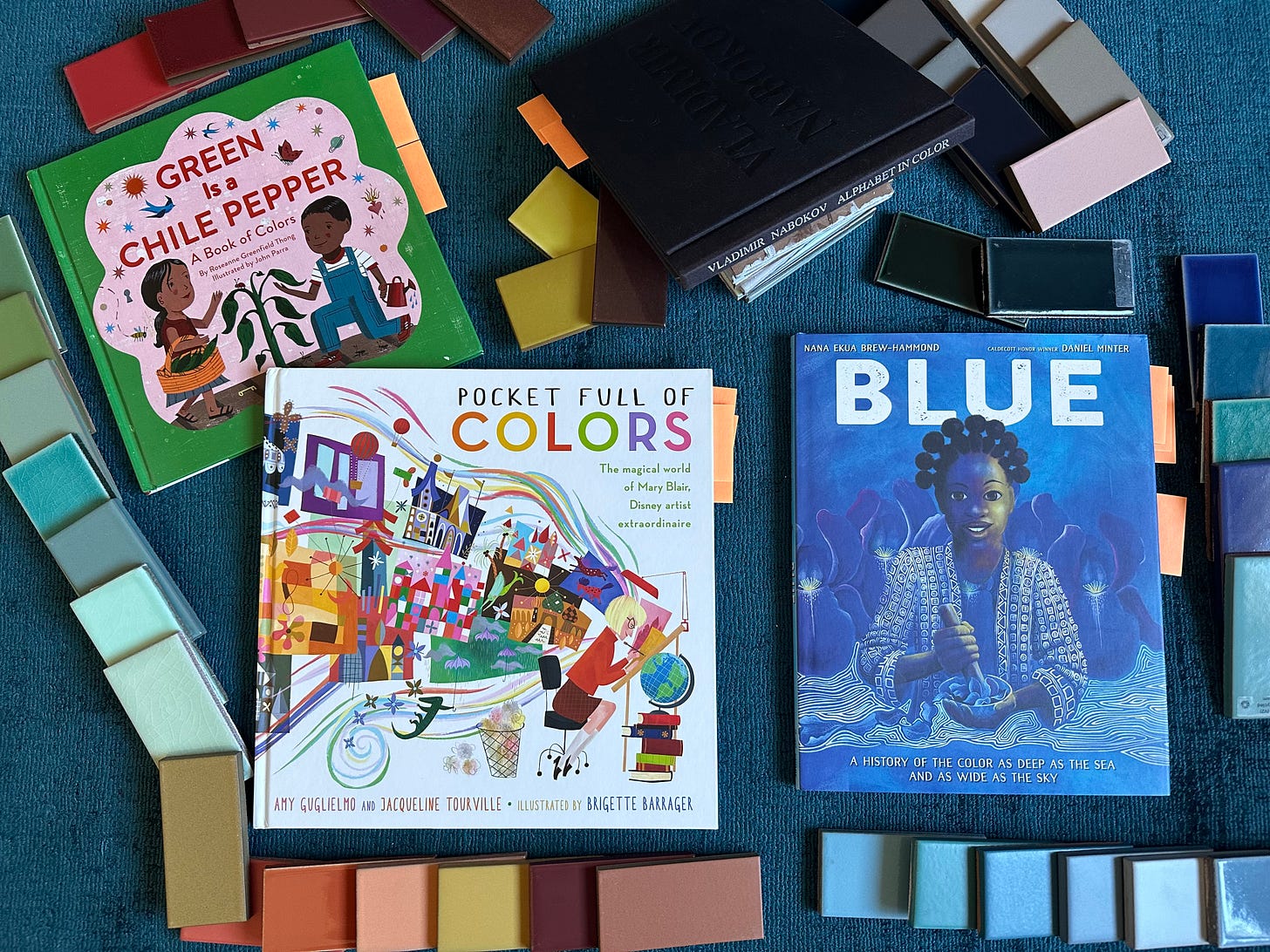
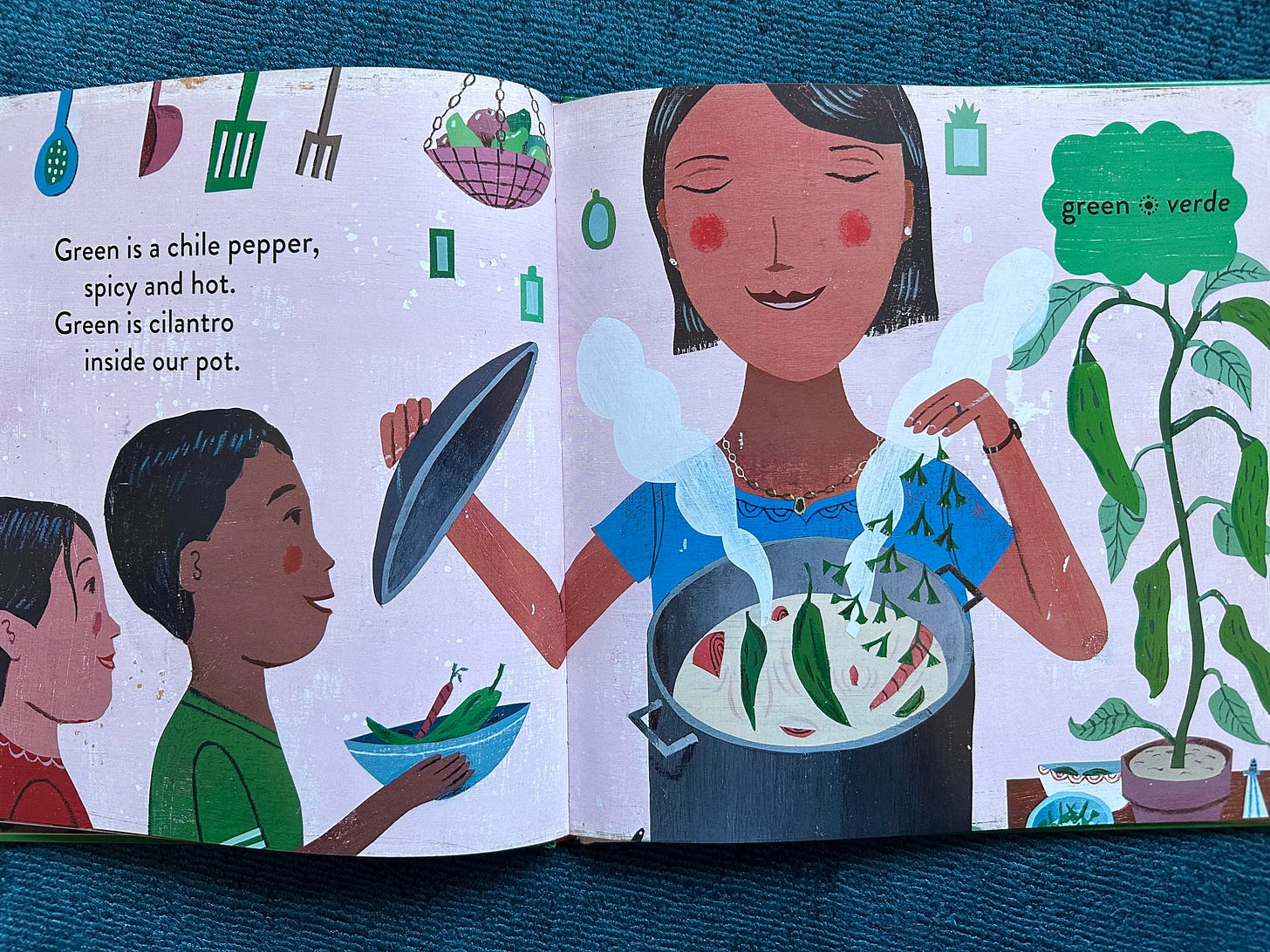
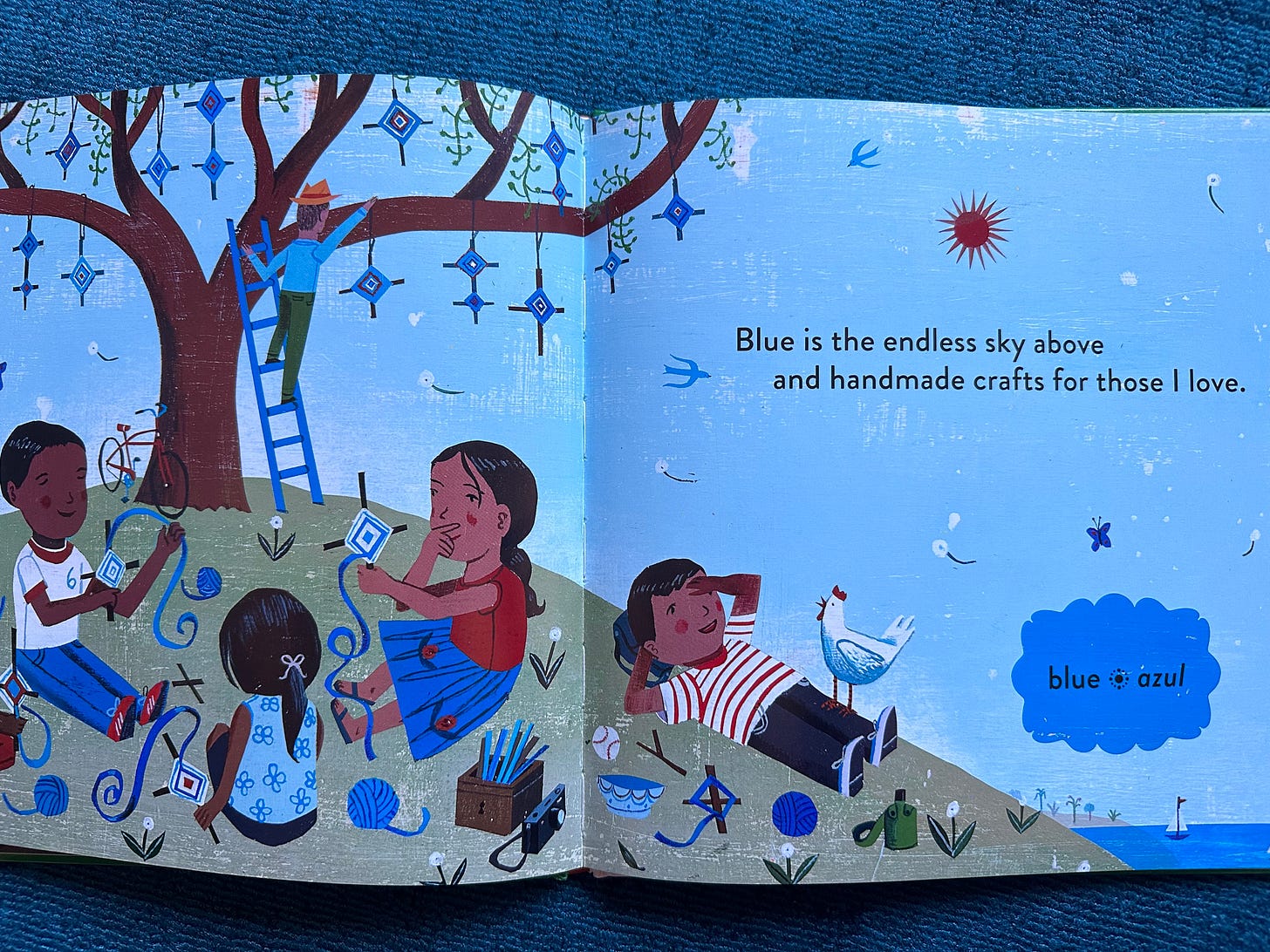


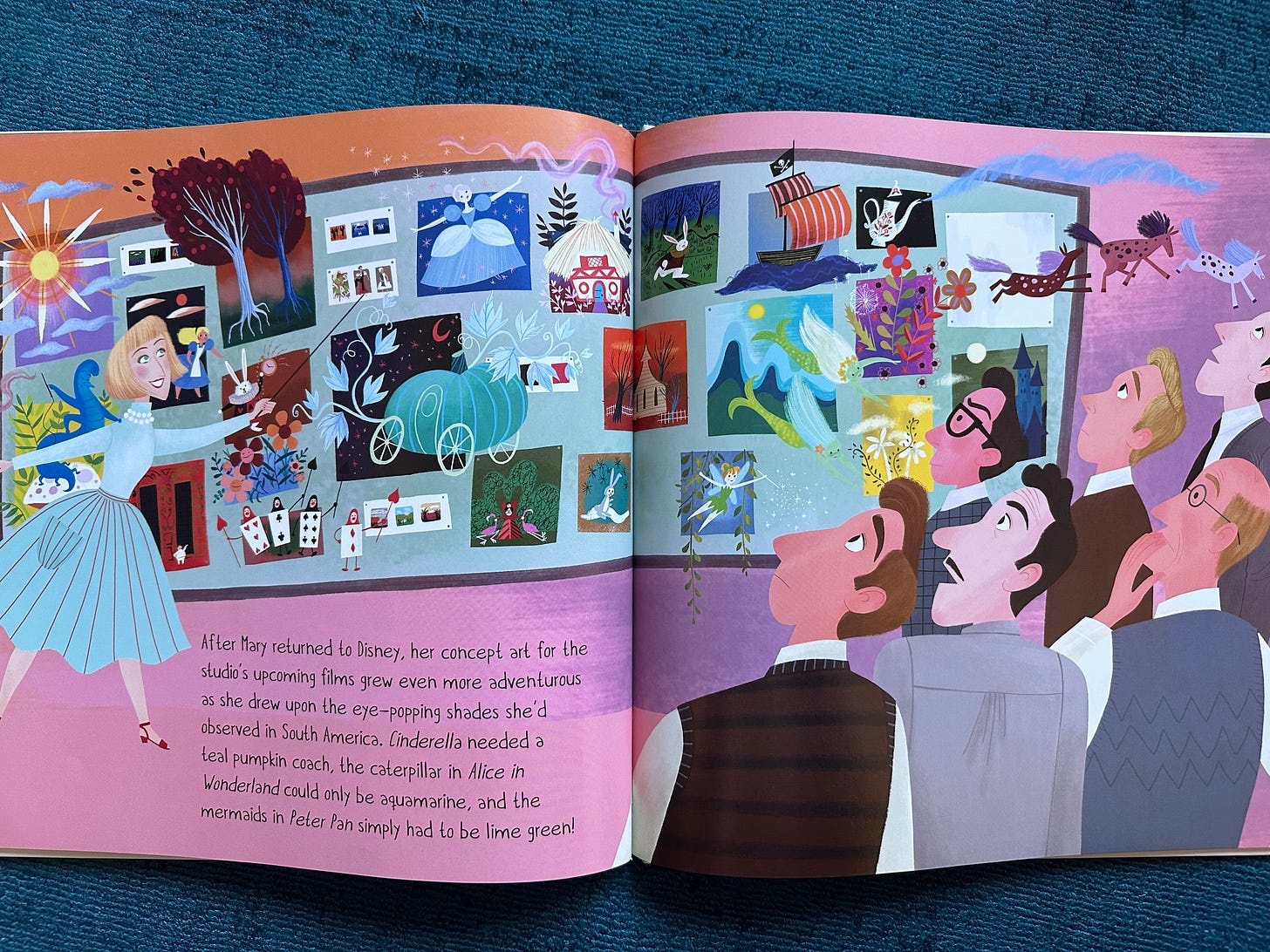


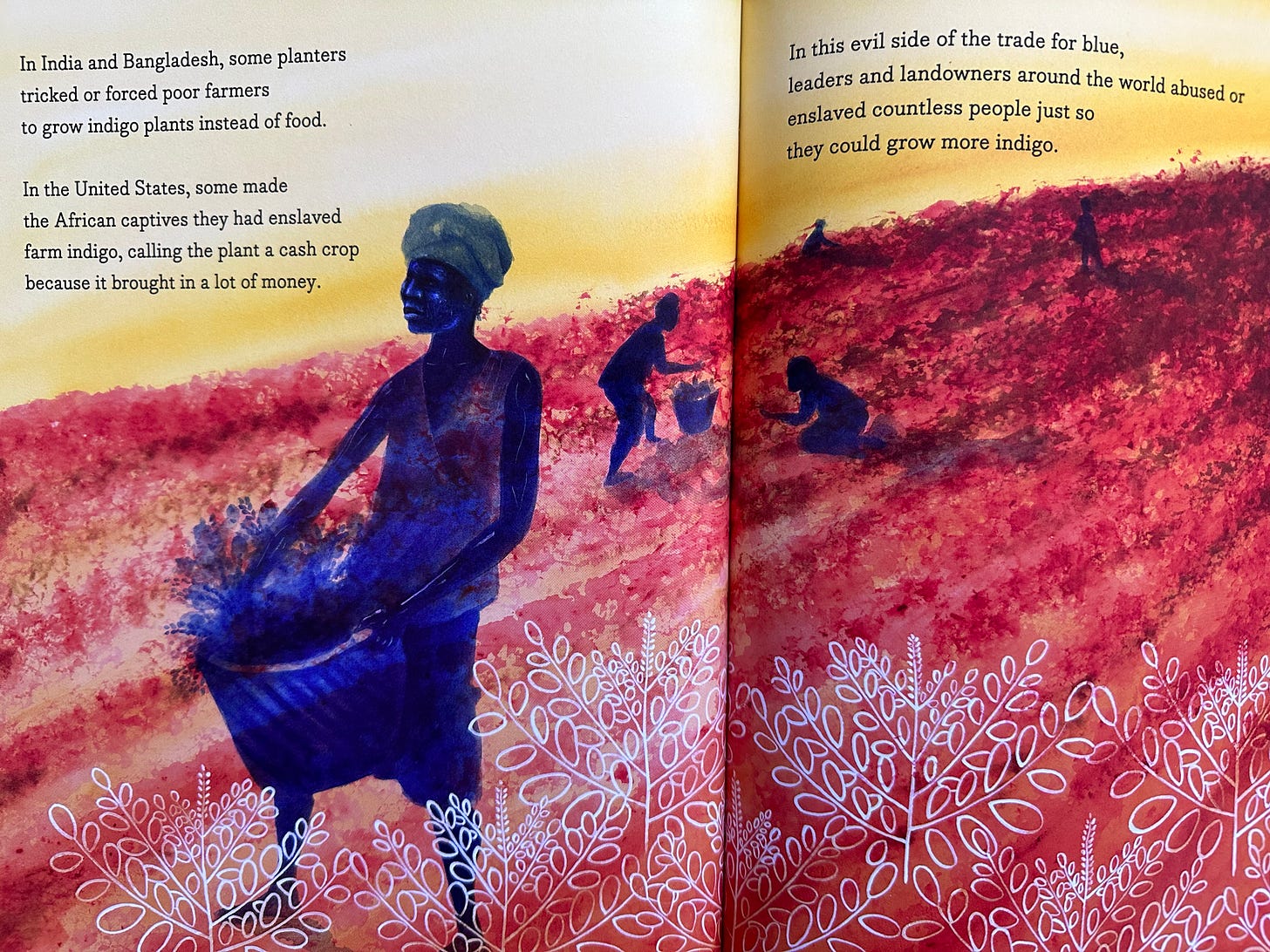
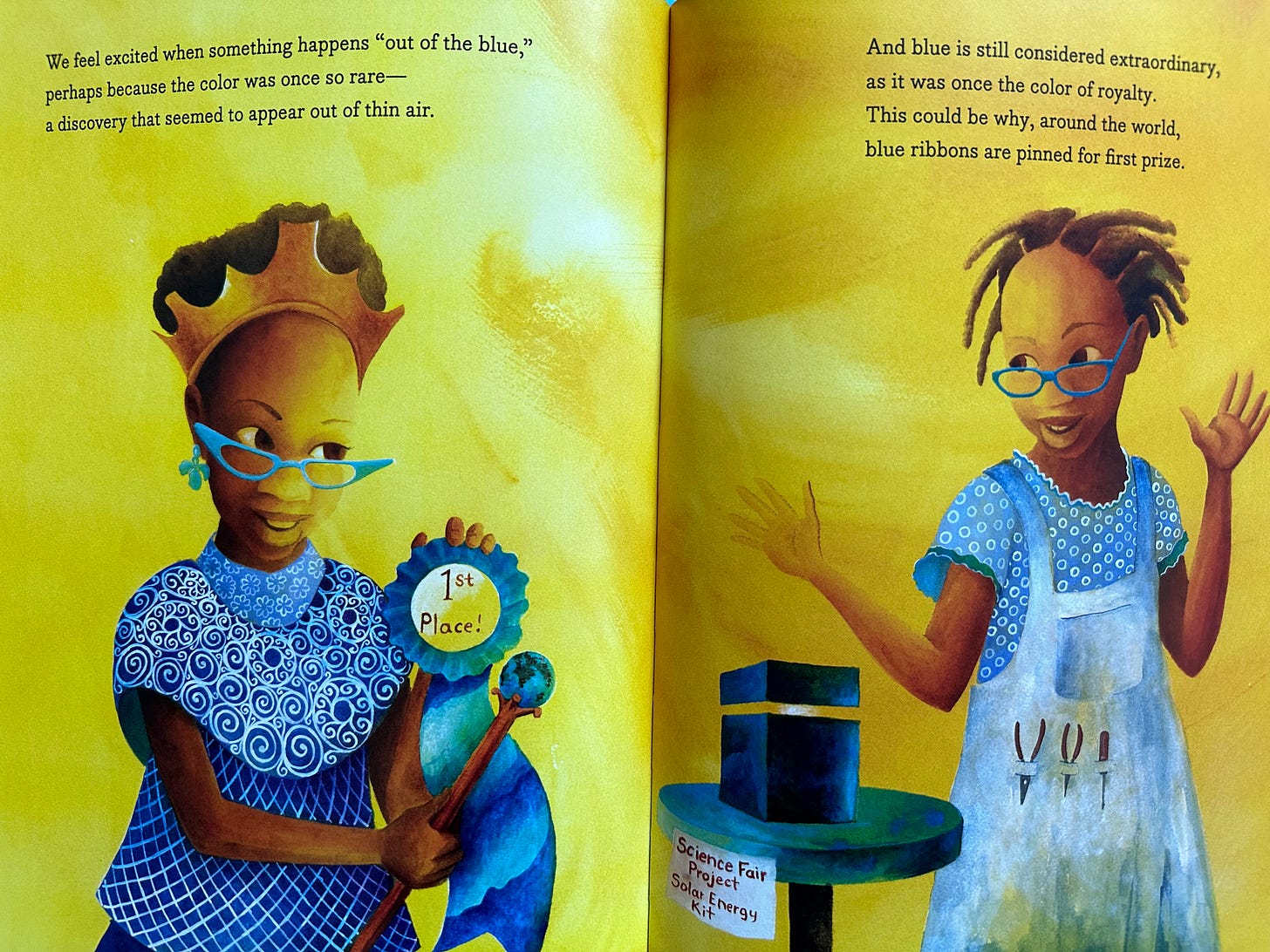
Love these selections -- so good!